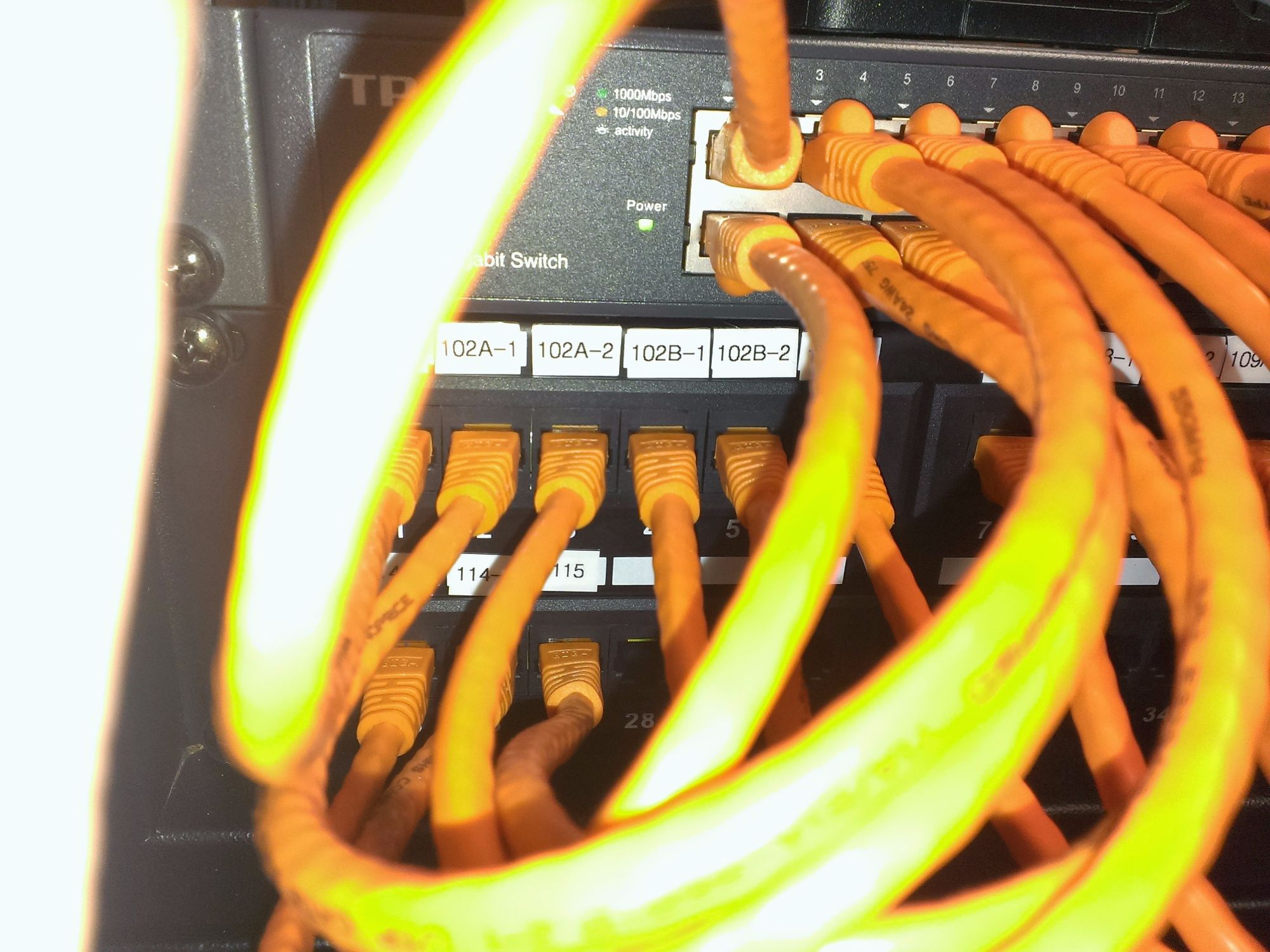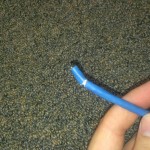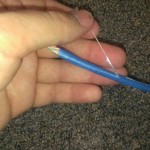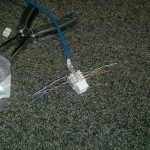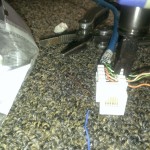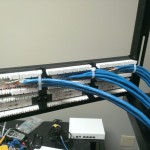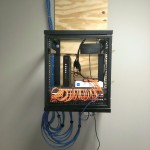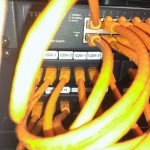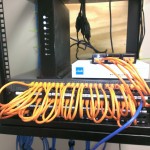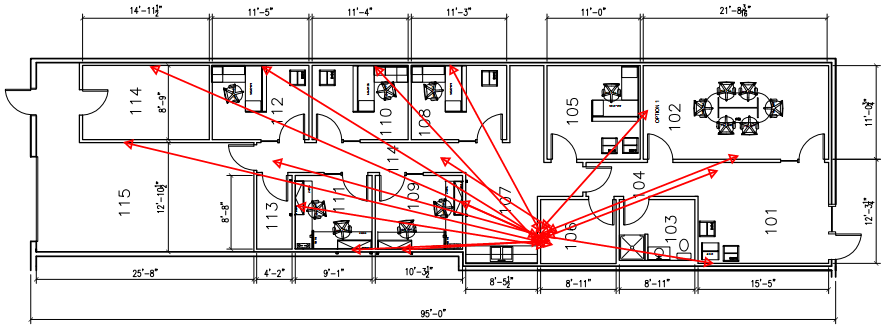So by now you should have read how to run the cable as well as plan your project. The last things you will need to do are terminate your connections and test them!
First we should quickly go over the two RJ45 wiring standards. There is A (T-568A) and B (T-568B) standards. There really isn’t a benefit to one over the other, as long as they match on both ends (thats how you get a straight through connection) you’re going to have success. However, the standards A and B are color coded on pretty much any jack and patch panels you purchase for your project.
In my example I went with the B standard because I researched it is more common in corporate networking. I believe A is older, but more popular in conjunction with running phone lines.
So first you are going to want to strip a short length of your cable. If you strip further back in order to immediately unsheathe the full amount you risk the chance of damaging the pairs you are about to punch down. They are extremely small gauge and easy to damage. You might not even see it, but you will find out you did it when the cable doesn’t pass its tests. So only expose a short amount of the pairs. You will be presented with 4 pairs of wires, a cable protector, and a pull string. This may be only present in higher quality CAT6. So pull the pull string, and it will unsheathe more of the protective coating and reveal more of the pairs. This will avoid the possibility of damaging the pairs during the stripping process. Once you wires are exposed, you will want to cut away the pull string and wire divider.
Next, you want to start unraveling your wire in order to place it in the proper location to be terminated. Make sure you only unravel as little as possible. The twists in the pairs improve the signal quality. The jacks you are placing the wires into should be color coded to the patter you decided to go with.
Lastly you will want to punch down the cables. Your punch down tool has a sharp end an an end that doesn’t cut the wire. You want to punch down each wire in a way that the outside of the wire is discarded when its fully punched.
Once you have punched down all the pairs, keep the jack exposed before tucking everything away. I recommend testing your connections before cleaning up everything up. Punching down into the back of the patch panel is extremely similar to the wall jacks. Stick with either A or B standards on both sides or you will create a crossover cable, and most likely have some strange networking issues because of that.
I recommend securing your patch panel to a network rack that is not able to move around. The last thing you want is one of the pairs coming lose. If your rack is on wheels, you’re likely going to be seeing networking issues over time.
You will also want to mount your switch right above or below your patch panel. This will give you the ability to utilize short length patch cables and quickly get your network up and running.
Lastly you want to test each connection. This is straight forward. Test each pair then label them on both sides to help you stay on top of what ports have already been tested.
Once everything is labeled and tested you can tidy up your wall plates and clean up!
Don’t forget to put any drop ceiling tiles in their place. You want to leave a good impression and I have always been told to leave places cleaner than they were.
